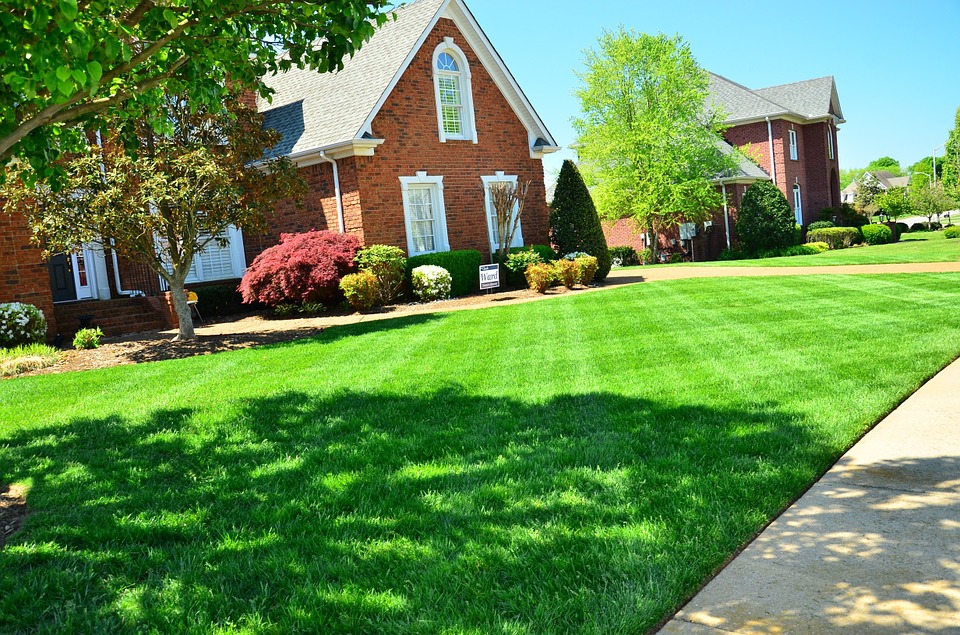The Perfect Way to Care for a Home Lawn in Arizona
Tuesday, April 16th, 2024In Arizona, plenty of homeowners are surely willing to ensure that their lawns are maintained properly. The first step to a beautiful lawn is the perfect foundation. To form the perfect foundation, one must explore the sod (or turf) options available to him or her. Evergreen Turf provides homeowners with those very options.
Firstly, sod in Arizona is used for both home and professional purposes. It forms the foundation of golf courses (both elite course greens and backyard putting greens), football fields, soccer fields and as previously mentioned, home lawns.
Amongst some of the most popular Arizona sods is Midiron. It comes at 0.38 cents per square feet. The colour is darkish green and the density of the grasses is high. It needs low maintenance and hence is perfect for those working five times a week who don’t want to hire a gardener. Most important, it is drought tolerant.
Another option is the Celebration Bermudagrass. It is also drought tolerant and needs less attention. Most importantly, this Arizona grass, which comes in varying degrees of the color green, recovers from damage excellently. It comes at just 0.40 cent per square feet. A similar type of turf which comes in a deeper shade of green at 0.38 cents per square feet is the Tifway 419. It is the most durable kind but it requires high maintenance.
Finally, an expensive and bright green variety called Palmetto St.Augustine can be purchased for 0.76 cents per square feet to start up or renovate an Arizona Lawn. It needs low maintenance and is best in places where there is a shade from the sun. However, it tends to cope well under sunlight too. The color of this sod is one of the most magnificent shades of green which can be found.
Ordering sod at Evergreen Turf can easily be done online or over the phone. The website www.evergreenturf.com helps recommend the perfect turf for an Arizona native. Also, a phone number is provided for further questions. The installation costs can also be checked online. The installation costs are certainly not very high. Ordering sod for a lawn less than $4000 square feet equals to a payment of only $500 in installation costs.
Evergreen Turf provides options which go beyond merely providing and installing the turf. Signing up for their email newsletter makes the life of a home lawn gardener much easier. The owner is provided with tips on maintaining the lawn and is given reminders about fertilizing and over-seeding according to the season.
As far as fertilization is concerned, Evergreen Turf does the first step by adding nutrients to the soil before installing the sod. Afterwards, it is up to the homeowner to fertilize the lawn according to growth. Evergreen Turf answers all kinds of fertilizing related questions. The blog on the website of this company meanwhile talks about important aspects of gardening such as the use organic methods as well as water conservation.
The use of organic mulch for example reduces the amount of water which is lost to the atmosphere due to dry desert climate in the summer by 30 percent. A home lawn owner who would like to protect his garden can find out where to get organic mulch simply by using the website.
Finally, why should a prospective buyer choose Evergreen Turf? One of the reasons is that they can trust this company. After all, the University of Arizona chose this company’s turf to form the foundation of their soccer field in Tucson. In Phoenix, the Waste Management Phoenix Open, one of the best golf tournaments to be played in that area, is of course played on Arizona Grass provided by Evergreen Turf.
This company uses the most modern technologies available today, offers turnkey solutions for any problem and has proven experience as shown above. This is also the most helpful sod company in Arizona. Evergreen Turf will provide the customer with endless options as at this company, the beauty of the lawn matters!
Select the perfect turf using our lawn selector. Once you’ve found the perfect type of grass, you can order online or by phone. Learn how to measure your lawn and how to install your new lawn with our helpful online guides.

